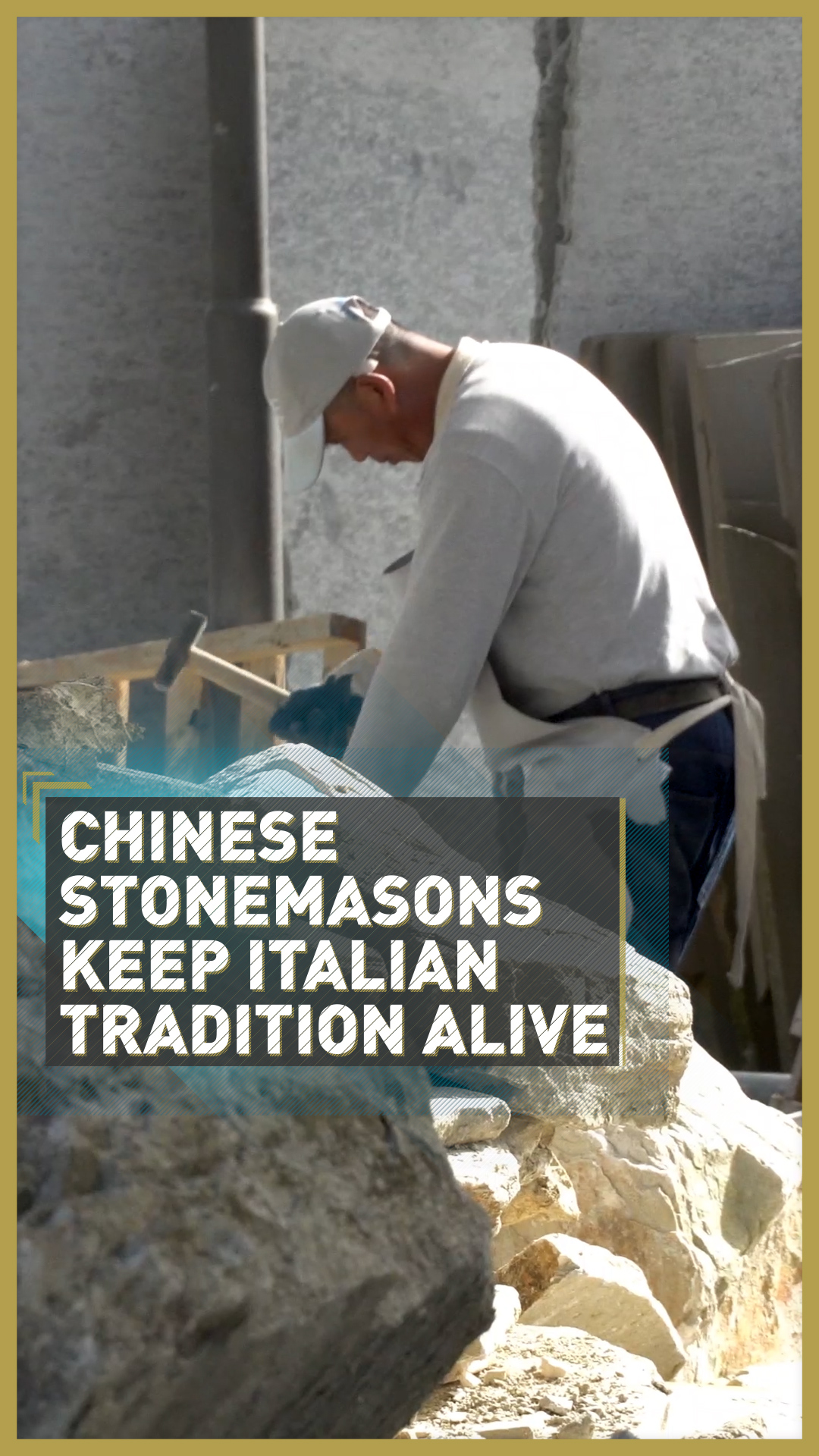02:46

In the small Italian towns of Barge and Bagnolo Piemonte there is a long tradition of stonemasonry – but it would have died long ago without the help of Chinese stonemasons.
For centuries, Italian workers have cut the 'Pietra di Luserna' – a stone traditionally used to build or clad elegant buildings in Turin – but back in the 1990s a problem began to emerge.
A shortage of workers threatened to bring the region's rich history of stonemasonry to an end as young people opted to pursue alternative careers outside of the industry.
READ MORE:
Finding the courage to fight the mafia
Cambridge dreams turn to nightmares
Switzerland vote on face-covering ban
"At the end of the 1980s there was a drop in the number of local workers available to be employed in this sector," Barge Mayoress Piera Comba told CGTN. "With the growth of the labor market in northern Italy, young people tended to discard this type of activity."
But an unlikely solution emerged. At the same time, some Chinese stonemasons in Milan came into contact with the Luserna stone companies by chance, moved to Barge and Bagnolo, and gradually filled all the jobs left vacant by the Italians.

Chinese stonemasons living in Milan moved to Barge and Bagnolo Piemonte in the 1990s to fill a void created by a dearth of Italian craftsmen – and have remained there ever since. /CGTN
Chinese stonemasons living in Milan moved to Barge and Bagnolo Piemonte in the 1990s to fill a void created by a dearth of Italian craftsmen – and have remained there ever since. /CGTN
Mario Reinaudo, a former stonemason and craftsman, explained: "The Chinese who came here were already in the trade, they knew how to use a hammer. And they are still working. In fact, it is only them who work the stone manually."
Since the arrival of Chinese workers more than 20 years ago, stonemasonry has become a family affair, with sons following in their father's footsteps and continuing the trade.
Local stonemason Zhao Peiwei said: "So many Chinese people are working here now as stonemasons. It's all about friends calling on friends, relatives bringing relatives, so that word spreads from one to another. Then everyone's friends come here together."

More than one in 10 people in Barge are Chinese but there are fears that stonemasonry could die out in the region as members of the next generation pursue careers outside of the industry. /CGTN
More than one in 10 people in Barge are Chinese but there are fears that stonemasonry could die out in the region as members of the next generation pursue careers outside of the industry. /CGTN
But that family lineage could be about to end. In Barge, more than one in 10 people are Chinese, but many of the children born into the industry don't want to be stonemasons.
Peiwei added: "Nowadays, young people don't like the heavy work, they like to do lighter work, less labor: manicures, hairdressing, restaurants, that sort of thing.
Young entrepreneur Christian Boaglio is concerned about the trend: "The risk is that in a few years' time the same manpower shortage will reoccur as 30 years ago."
Even if stonemasonry dwindles in Barge and Bagnolo Piemonte, the bond forged between Chinese and Italians will live on.
Comba said: "We have discovered that Piedmontese people and Chinese people are not so different. We both belong to the countryside, we have a very strong sense of family and tradition. So there was common ground to build on."
Video editing: Sam Cordell

